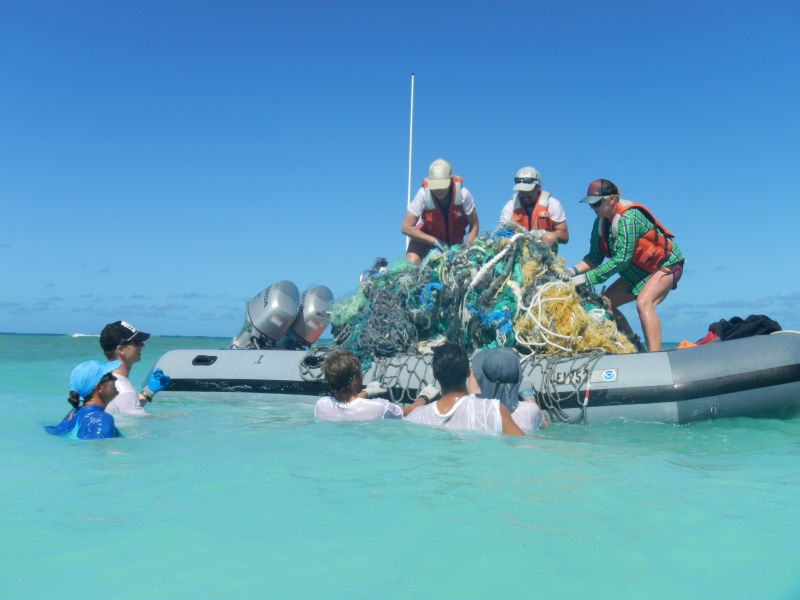By: Nancy Wallace, Director of the NOAA Marine Debris Program
December 14, 2016
Click here for the original blog post.
This year marked the ten-year anniversary of the NOAA Marine Debris Program. We are proud of our accomplishments and looking forward to the next ten years! Throughout 2016, we have celebrated by looking back on our accomplishments over the past decade. For a review of the past ten years, check out our timeline and continue to check out our blog and website as we move forward into our second decade of marine debris work!
With 2016 soon coming to a close, so does the NOAA Marine Debris Program’s ten-year anniversary. Over the past ten years, the Program has seen tremendous growth and success as we’ve worked to address the issue of marine debris. We’ve expanded from an initial staff of six to nineteen, now covering ten regions of the country. Through the dedicated efforts of our team members and partners, we’ve removed thousands of tons of marine debris from our shores, gained valuable knowledge through scientific research, and reached thousands of students, teachers, and community members to raise awareness of the issue and prevent marine debris.
As we move into our next decade, we are looking forward to the future and the strides we hope to make in the fight against marine debris. To focus our efforts, we are driven by our strategic plan, which will guide us through 2020. We will continue to work with partners and stakeholders both at home and abroad to prevent new sources of marine debris. Our support of projects that work to remove, prevent, and research debris will be ongoing and we’re currently looking forward to the award of our new research grants later in 2017, working to further expand our knowledge base. Our next group of removal grants will be awarded as well, helping us continue our mission to remove debris from our shores. In addition, our focus on marine debris prevention will continue, as we investigate what constitutes the most effective method for inspiring behavior change regarding marine debris prevention.
I am proud of what the NOAA Marine Debris Program has been able to accomplish over these past ten years and look forward to the next decade and beyond of marine debris work, until our vision of the global ocean and its coasts free from the impacts of marine debris is realized. Thank you to all who support our efforts by making changes in your own lives to combat marine debris; this is a global problem for which the solution requires a collaborative effort and we are excited to continue to be part of it.
 An official website of the United States government.
An official website of the United States government. 

